|
| ||||
|
She's Still a Beauty: Celebrating Sixty Years of Holden Cars
28th November, 2008 | |||
|
The first 48-215 rolled off the line at Holden’s Fishermans Bend plant on 29th November 1948, at which point Prime Minister Ben Chifley famously told reporters: "She’s a beauty." A gala launch event attended by more than 1,000 dignitaries signalled the arrival of ‘the car made in Australia, for Australia’ and the beginning of a new era in local motoring. Since that day, GM Holden has built more than seven million vehicles and more than 10 million engines for local and overseas sale. More than 780,000 GM Holden vehicles have been sent around the world in five decades and more than four million export engines in 27 years, representing Australia’s largest automotive export programme. Australia’s oldest automotive enterprise grew from a saddlery business established by James Alexander Holden in 1856. The company merged with General Motors in 1931. GM Holden Chairman and Managing Director Mark Reuss said the company had become a symbol of local design and engineering expertise and Australia’s ability to compete on the world stage. "Since the 48-215 was introduced to Australian roads 60 years ago, the Holden name has become synonymous with local ingenuity," Mr Reuss said. "On going development and a commitment to making cars for local driving conditions has seen Holden forge a special place in the hearts and minds of Australian families." "Significant advances in safety technology including standard driver, passenger and side impact airbags, computer optimised restraint systems and ABS brakes were introduced by Holden as ‘firsts’ for Australian manufactured cars." "But as we celebrate our proud past, we are busy planning for the future, developing more alternative fuel and fuel saving technologies that reduce Australia’s dependence on foreign oil." "It is about making Holden the smarter choice for Australian motorists, producing cars that are cheaper to run and better for the environment." 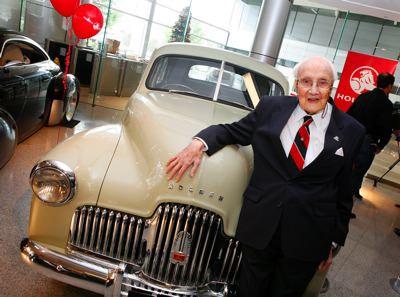
In 2008, GM Holden builds on 12 consecutive years of Commodore as Australia’s top-selling passenger vehicle and export programmes to USA, Brazil, South Korea, South Africa, New Zealand, Middle East, UK and Canada. GM Holden’s major operating facilities are located at Fishermans Bend in Victoria, a site which houses Holden’s technical centre, administration and engine plants. Also in Victoria are the company’s spare parts operations in Dandenong and automotive Proving Ground at Lang Lang. Holden’s vehicle manufacturing facility is in Elizabeth, South Australia. To celebrate Holden’s 60th anniversary, 97-year-old Jack Rawnsley (see image above), a former Holden engineer who worked on the development of the 48-215 was the guest of GM Holden and was reunited with the first Holden, last Saturday. GM HOLDEN MILESTONES – 1850s TO 2000s AND BEYOND 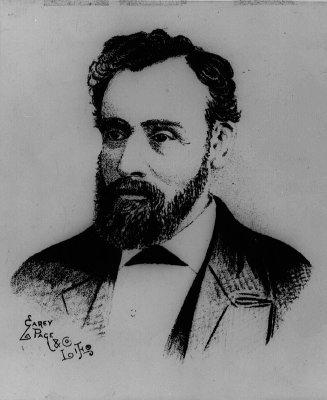
The 1800s 1854 Englishman, James Alexander Holden (19), arrives in Adelaide, South Australia. 1856 James Alexander Holden establishes a leatherwork and saddlery business, J.A. Holden & Co., in King William St, Adelaide. 1859 Birth of J.A. Holden's eldest son, Henry J. Holden. 1865 J.A. Holden & Co. expands, moves to bigger Adelaide premises. 1878 Further expansion sees the addition of a new business: the repair and renovation of horse-drawn carriages. 1879 Twenty year-old Henry J. Holden joins the company, now called J.A. Holden & Son. 1885 Harness and carriage maker Henry A. Frost becomes a partner and the firm is named Holden & Frost. Henry J. Holden is the senior partner. Goods manufactured include harnesses, saddlery, travel goods, gun cases, whips, crops and vehicle hardware. 1897 Death of James A. Holden. Holden & Frost becomes a major supplier of harnesses, saddlery, belts and other Boer War equipment under government contract. 20th Century 1905 A third generation Holden, Henry's eldest son, Edward W. Holden, joins the business. 1908 In the US, the General Motors Corporation is formed. It includes the Buick Company, Oldsmobile, Oakland and Cadillac. 1910 Holden & Frost open a motor trimming department, the products marketed as Holdfast Trimmings. 1913 Holden & Frost begins production of complete motorcycle sidecar bodies. 1914 Holden & Frost produces its first custom-made car body. The GM Export Company appoints its first field representative in Australia; import of the first GM cars begins shortly afterwards. 1917 The Australian Federal Government's wartime trade restrictions (decreeing that only one complete car be imported for every three chassis) leads to a decision by Holden & Frost to commence large-scale production of car bodies. Holden Motor Body Builders is set up as a division of Holden & Frost, with Henry J. Holden appointed as Chairman and Edward W. Holden as Managing Director. It begins design and manufacture of a standardised car body for Buick and Dodge chassis. 1918 Holden's Motor Body Builders Ltd (HMBB) becomes a registered company. Annual car body output for various makes reaches 587. Business booms as the use of state-of-the-art machinery and innovative techniques ensures a competitive product. 1920 HMBB builds an impressive reputation and bodies for Dodge, Buick, Ford, Chevrolet, Studebaker, Overland, Hupmobile, Essex, Durant and Dort - and some European marques. 1923 Holden's employs over 1,000 workers and produces 240 car bodies a week – more than half the national output. Holden plans the country's most modern production line at a new facility in Woodville, SA, and gains exclusive rights to assemble GM cars in Australia at this plant. 1924 Holden begins production at Woodville, continues making bodies for other chassis importers at its original, now extended, King William St, Adelaide, plant. Total annual production of 22,150 units includes 11,060 for GM. 1925 Holden's body-building operation produces over 34,000 units, including the first closed body types. With a workforce of 2,600 and 16 hectares of factory floor, it is the largest outside North America and continental Europe. In addition, HMBB turns out tram and bus bodies and railway carriages. 1926 Henry J. Holden dies and his son Edward Holden is appointed Chairman and Managing Director. General Motors Australia Pty Ltd (GMA) is formed. It has headquarters in Melbourne and soon opens assembly plants in Melbourne, Sydney, Brisbane, Adelaide and Perth. 1928 Holden's now-famous 'lion and stone' symbol, which represents the legend of man's invention of the wheel, is first used. 1930 Australia feels the full effect of worldwide economic depression and Holden, having just completed a major expansion, is caught off-guard. Motor body orders plummet and attempts at diversification fail. 1931 General Motors purchases Holden Motor Builders and merges it with General Motors (Australia) Pty Ltd to form General Motors-Holden's Ltd (GM-H). Sir Edward Holden is the company's first Chairman. A.N. Lawrence is Managing Director. 1934 Laurence J. Hartnett, a former Director of Vauxhall, takes up duties as Managing Director. 1935 Holden produces its first 'All Enclosed Coupe' for Oldsmobile, Pontiac and Chevrolet chassis. Dubbed 'The Sloper' this uniquely Australian design is a forerunner of the 'fastback'. Holden builds its first all-steel bodies. 1936 GM-H sets up new headquarters and a new assembly plant at Fishermans Bend, Melbourne, on 20 hectares of land. The facility is opened by the Prime Minister, Joseph Lyons. 1937 Holden produces 32,489 vehicles, claiming 40 per cent of the market. Overall profit exceeds £1 million for the first time. Hartnett and GM-H executives discuss manufacture of a complete car within Australia. 1938 Holden installs the country's largest metal stamping press, at Woodville, South Australia. 1939 The investigation into building an Australian car intensifies. Several designs are contemplated and a study known as Project 2200 commences. Construction begins on a new assembly plant at Pagewood, NSW. When war is declared in September, Holden places its plants, personnel and facilities at the disposal of the Federal Government. 1942 Holden's wartime workforce, peaking at 12,000 in 1942, operates from seven plants nationwide and turns out supplies for Australian and US armed forces. Items produced include aero and marine engines, aero assemblies, marine craft, and over 200 types of vehicles, among them ambulances, armoured cars and Blitz trucks. 1943 With military contracts slowing, GM-H begins work on a design study, 'Project 2000'. Experience and skills gained from wartime production, with the technical support of the parent company put GM-H in a good position to take on the challenge of building Australia's first successfully mass-produced car. 1944 A 'Project 2000' prototype is produced; many variations and alternative designs are considered. Laurence Hartnett sells to General Motors the concept of all-Australian manufacture. 1945 The Project 2000 car design evolves into 'Project 2200'. GM-H engineers and technicians travel to the US to study manufacturing operations and assist with design and construction of experimental prototypes based on GM's 195-Y-15 six cylinder light car project. 1946 A joint US-Australian team in Detroit produces three hand-made prototypes of the Australian car. All are shipped to Australia, complete with detailed project plans and accompanied by engineering project team members. Harold E. Bettle is appointed Managing Director. 1947 The prototypes are exhaustively tested for durability and reliability on public roads, component modifications are undertaken. All GM-H departments are asked to submit suggested names for the car. Short-list favourites include CANBRA, GMH, GMA, GEM, LION and HOLDEN. Some £1,200,000 is spent on mechanical fabrication, engine and transmission manufacture and foundry facilities at Fishermans Bend. And £750,000 is spent on fabrication equipment, presses and a new paint shop at Woodville. 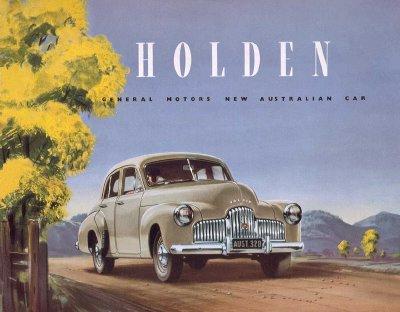
1948 The first production schedule is finalised on 5th April, the first body is completed at Woodville in July. The name 'Holden' is announced. The model's engineering prefix is 48-215. It is later nicknamed 'FX', to distinguish it from its FJ successor. Holden number one (body No.6) is the first production-ready car to come off the Fishermans Bend line, on 1st October. Some 1,200 official guests, headed by the Prime Minister, Mr Ben Chifley, attend the public announcement of "Australia's Own Car" on 29th November at Fishermans Bend. The ceremony also marks the inauguration of the Australian automotive industry. Some 26,000 GM-H employees and family members preview the new model at Open House gatherings at plants nationwide, Holden dealers and distributors attend special launches. Initial production capacity averages 10 vehicles a day. 1949 Demand for the 48-215 far outstrips supply and waiting lists are oversubscribed. GM-H aims at annual production of 20,000 units. 1950 Production lifts to 100 units per day to reach an annual total of 20,113 vehicles. Some $43 million is paid to outside suppliers of components, materials and services. New vehicle registrations in Australia total 206,087 - almost 70 per cent up on the previous year. Total sales of GM-H products exceed the 1949 total by 60 per cent. 1951 Production rate reaches 100 units a day. Total 48-215 production passes 50,000 units. The first Holden 'Coupe Utility', the 50-2106, is launched; PVC interior trims are introduced. GM-H buys 152 acres at Dandenong, Victoria for future expansion programmes. 1952 On Holden's fourth birthday, GM-H announces an £11 million expansion programme designed to raise output to 200 units a day. Melbourne, Sydney and Adelaide plants are to be enlarged and modernised, production efficiency and quality levels lifted. Holden annual sales reach 32,000. The Holden Business Sedan, with heavy duty items for taxi and fleet use, is introduced in July. 1953 The famous FJ Holden is launched in September. Based on record sales, GM-H makes the largest profit in its history and provides 1,700 new jobs. Earl C. Daum is appointed Managing Director. 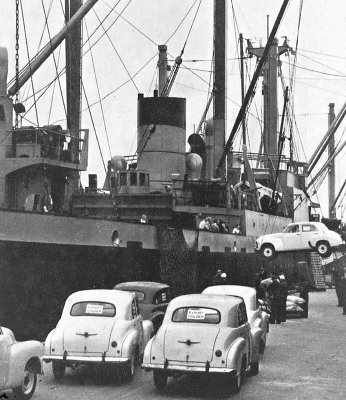
1954 Further expansion plans are announced. The aim is to produce 72,000 units per annum. Exports of fully built up Holdens to New Zealand begin in November (see image opposite). Australian vehicle registrations are the highest ever recorded, and one in every three vehicles on Australian roads is a GM-H product. Seven GM-H plants employ 13,822 people. 1955 While Holden passenger cars accounted for 26.95 per cent of all registrations and the Holden Ute has a 32.1 per cent share, market leader GM-H reports that these figures did not reflect true demand as availability was limited by production. Some 1,341 Holdens are exported. And 2,152 acres of land are selected at Lang Lang, Victoria, and plans to construct 'a modern and completely equipped proving ground' - Australia's first - commence. Work begins on the Dandenong (Victoria) plant. 1956 It is 100 years since James Alexander Holden set up a saddlery business in Adelaide. In January, the 250,000th Holden (an FJ) is built and the tubeless tyre is introduced. The new Dandenong body and assembly plant opens. The first entirely new Holden since the 48-215, the FE, is launched in July following four years of development and a £4 million investment. CKD (completely knocked down) Holden packs are exported to New Zealand for the first time. Holdens are shipped to Thailand, Malaya and North Borneo. 1957 The first Holden station sedan, based on the FE sedan, is produced in March. Some 4,500 Holdens are exported to 17 markets, which include Hong Kong, Sudan and East Africa. GM-H achieves a new sales record, increases its share of total registrations to 46.3 per cent. The Lang Lang (Victoria) proving ground commences operations in August. The one millionth car body is produced at the Woodville plant. NASCO parts operation commences at Dandenong. 1958 A £9 million expansion of plant and manufacturing facilities, aimed at increasing annual production to 125,000 units, is announced. Planning of a new facility at Elizabeth, S.A., begins. The FC Holden is launched in May. Holden passenger cars account for 47.4 per cent of total registrations, the Holden Ute records 49.6 per cent of the light commercial market. The total number of Holdens produced exceeds 500,000. Employee numbers reach 18,699 - an increase of over 10,000 in 10 years. Work begins on a banked, circular high-speed test track at the Lang Lang proving ground. 1959 Total exports since 1954 exceed 14,000. Assembly of CKD Holden Ute commences in Indonesia and South Africa. New Body Hardware plant at Elizabeth (S.A.) begins production. The first transistor car radios are offered as an option. Harlow W. Gage is appointed Managing Director. 1960 FB Holden is launched in January. Holden sales top 12,000 per month. Left-hand drive production for export markets begins, the first shipment to Hawaii (USA) follows. 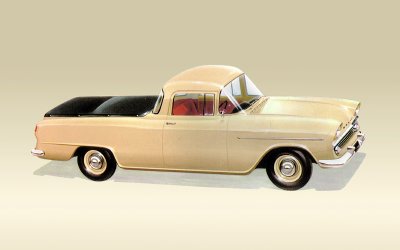
1961 The EK Holden is launched in May. 1962 A new body assembly plant opens at Elizabeth and a new 6-cylinder engine plant at Fishermans Bend nears completion. The EJ Holden is launched in July. When the millionth Holden, a gold EJ Premier, is built at Dandenong in October, it is estimated that if these cars were placed bumper to bumper they would stretch from Geraldton (W.A.) to Townsville (Qld). David L. Heglund is appointed Managing Director. 1963 A new engine plant and foundry commence operations at Fishermans Bend; capacity is 700 engines a day. Further expansion plans, with a 175,000 annual production target, are announced. Elizabeth (SA) trim assembly plant and paint shop commence operations. The EH Holden is introduced in August. GM-H retains sales leadership for the 12th successive year and sets new sales records. Dealers and distributors with Holden franchises operate in 59 export territories, exports total 10,798 units. 1964 GM-H employee total reaches 23,914. A new Technical Centre opens at Fishermans Bend. It houses over 900 designers, engineers, draftsmen, modellers, technicians and skilled tradesmen and provides state-of-the-art automotive design and development facilities. Trim fabrication plant commences operation at Elizabeth (SA). Construction of Acacia Ridge (Qld) plant commences. The EH is the best-selling Holden model thus far (250,000 units). 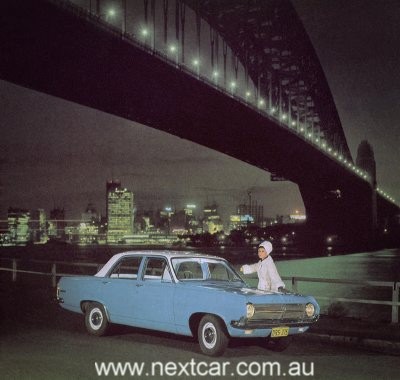
1965 The radical new HD model is introduced in February. Holden retains long-term sales leadership record, outselling its nearest competitor by more than 3:1. One out of every three cars on Australian roads is a Holden. Exports increase by 41 per cent to total 19,369 units. A new, mechanised grey iron foundry at Fishermans Bend begins pouring. The 1,500,000th Holden is produced, at the Pagewood Plant, Sydney. Australian content exceeds 95 per cent. Some 601 Holden dealerships nationwide employ over 20,000 people. 1966 The HR Holden is launched in April. GM-H is the first Australian manufacturer to fit seat belts on all models. Its vehicles provide class-leading levels of standard safety features. Investment in expansion continues. Vehicle assembly at the Acacia Ridge, Qld, plant commences. Australian-made torque converter production commences at Dandenong. Holden accounts for 56.2 per cent of all Australian motor vehicle exports. Max E. Wilson is appointed Managing Director. 1967 GM-H increases its market coverage and improves its market position with the launch of the first small Holden, the HB Torana. It takes its name from an Aboriginal word meaning 'to fly' and is based on the Vauxhall Viva from England. The 100,000th export Holden is produced. A new foundry, officially opened by Prime Minister Harold Holt, commences production at Fishermans Bend. Safety Design Test Centre at Lang Lang proving ground and automatic transmission plant announced; new electroplating plant opens at Woodville (SA). 1968 The HK Holden is introduced in January. The Holden Monaro and Brougham models make their debuts in July. Holden introduces the energy absorbing steering column to the Australian market. Torana bodies are made in Australia for the first time. Work progresses on a V8 engine plant at Fishermans Bend. 1969 The two millionth Holden, a gold HK Brougham, is produced in March at Dandenong. The HT Holden is launched in May. Australia's first automotive Safety Design Test Centre opens at Lang Lang proving ground, complete with barrier test and Hyge sled facilities. A V8 engine manufacturing plant opens at Fishermans Bend. The first Australian-made V8, developed at a cost of $22.5 million, is exhibited in the advanced, mid-engined Holden Hurricane experimental car. Automatic transmission production commences. The two millionth Holden is produced. GM-H moves into the small/medium market sector with the launch of the locally designed 4 and 6 cylinder Torana (LC series), which includes the sporty Torana GTR. 1970 The HG Holden is launched in July. Total annual Holden sales exceed 200,000. The performance-oriented Torana GTR XU1 (LC series), the first Holden with an aerodynamic spoiler, is introduced. A fibreglass-bodied Torana experimental model, called the GTR-X, is exhibited to gauge public reaction. A $16.5 million Tri-Matic automatic transmission plant, Holden's first, opens at Woodville, SA. Total export revenue rises to $42 million, almost double the 1968 figure. Seven overseas plants assemble Holden vehicles from Australian-manufactured components. A.C. (Bill) Gibbs is appointed Chairman & Managing Director. 1971 Safety upgrades across the Holden range see heater/demisters and rear seat belts fitted as standard. The HQ range is introduced in July, following the most ambitious product development programme undertaken by GM-H since the first Holden. Holden's first luxury long wheelbase derivative, the Statesman, is launched. The first car based Holden cab/chassis light truck, commonly known as the 'one tonner', is announced as part of the HQ range, which boasts the largest-ever selection of 18 model variants. The GM-H national parts distribution complex opens at Dandenong (Victoria). 1972 First official standards limiting exhaust gas carbon monoxide content come into effect on 1st January. Holden marks the 2,500,000th vehicle off the production line on 7th August and exports its 250,000th unit in October. Peter Brock’s Torana wins Bathurst (Hardie Ferodo 500). ‘Bedford by Isuzu’ trucks and commercials is launched, following link between GM and Isuzu Motors of Japan. 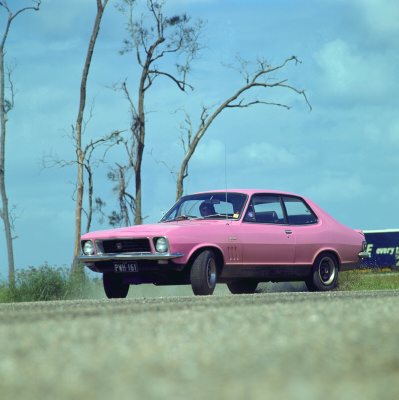
1973 Holden marks the 25th anniversary of manufacture in Australia in November. Damon Martin appointed Managing Director in June. A truck assembly plant began operations at Dandenong, Victoria. 1974 Holden’s exports pass the $400 million mark in January. GM-H instituted a programme to reduce energy usage at all plants and the company begins an $18 million facilities investment programme for South Australia and Victoria. The three millionth Holden is produced at Pagewood in June. 1975 Peter Brock and Brian Sampson’s Torana wins Bathurst (Hardie Ferodo 1000). In December, the registered status of Company changed from Proprietary Limited to Limited Company. General Motors-Holden’s Pty Ltd became General Motors-Holden’s Limited. 1976 Charles S (Chuck) Chapman took over as Managing Director in January. Holden announces a new four-cylinder engine manufacturing project. Bob Morris and John Fitzpatrick win Bathurst (Hardie Ferodo) 1000 in a Torana. Holden celebrates the 50th anniversary of GM in Australia in November. 1977
Holden’s acclaimed Radial Tuned Suspension (RTS) system is added to Torana and full size Holdens. Holden expands the Torana range with the release of the A9X performance equipment package. This turns the 5.0-litre V8 Torana into one of the most potent road cars ever built in Australia. It has four-wheel disc brakes, a Holden first. 1978 Holden begins production of the ‘Starfire’ four-cylinder engine, the first locally designed and manufactured four-cylinder engine. Peter Brock and Jim Richards take out the Hardie Ferodo 1000 at Bathurst in a Torana. 1979
A $25 million foundry modernisation programme is begun at Fishermans Bend. Plans are announced for a $210 million four cylinder engine complex at Fishermans Bend. The Federal Government announces a motor industry export credit scheme, beginning in 1982 with credits at 5 per cent, rising to 7.5 per cent in 1985. Charles S. Chapman became first GM-H MD to be elected GM Vice President. 1980 GM-H becomes the first local manufacturer to publish passenger vehicle fuel consumption figures to Standards Association of Australia test procedures. Local assembly of Isuzu trucks began at Dandenong. Commodore makes its motor racing debut at Symmons Plains in Tasmania. GMH retained market leadership for 28th consecutive year and Commodore continued as Australia’s top-selling car. 1981 Holden launches its first 4WD commercial, the Isuzu-sourced Rodeo. The four millionth Holden, a VC Commodore SL/E, is produced at Dandenong in June and a $300 million four cylinder Family II engine plant is commissioned by Prime Minister Malcolm Fraser at Port Melbourne in November. Two thirds of Holden’s production is committed to export markets. 1982 Camira JB sedan, the first Holden front-wheel drive model, is produced at Dandenong and Acacia Ridge assembly plants. 1983 An Australian-developed Camira wagon is added to the vehicle line-up and components sets for it are exported. Peter Brock, Larry Perkins and John Harvey join forces to win the James Hardie 1000 in a Commodore. 1984 Holden embarks on a model sharing venture with Nissan, with the first model – a 1.5-litre Astra hatchback – launched. Built for Holden by Nissan Australia with some components manufactured by Holden, it represents the first example of local model sharing. Peter Brock launches the HDT VK SS Commodore and produces the Commodore SS Group 3 in conjunction with Holden. 1985 A single point tool body assembly shuttle is introduced at Holden’s Elizabeth plant. The all new front drive Gemini sedan (RB series) rolls off the line at Elizabeth, while the high performance Commodore Group A V8 is unveiled. 1986 Holden is restructured into two companies: Holden’s Motor Company (HMC) and Holden’s Engine Company (HEC). 1987 Holden’s Motor Company severs links with HDT, while GM’s SunRaycer win the world’s first cross-continental solar race, run from Darwin to Adelaide. Racing champion John Harvey is the lead driver. Formation of a new joint venture company is announced by HMC Ltd, AMI/Toyota Ltd and Toyota Manufacturing Australia Ltd. 1988 Holden Special Vehicles (HSV) commences operation. It builds the fuel-injected V8 Holden Commodore SS Group A super car (VL series) – a joint venture development by Holden and Tom Walkinshaw’s TWR. Holden exports the one millionth Family II four cylinder. 1989 VN series Commodore introduced. Model sharing with Toyota begins, leading to Toyota Lexcen (Commodore), Holden Nova (Corolla) and Holden Apollo (Camry). Nova and Apollo models replace Astra and Camira. 1990 Holden rejoins the big car field with VQ series Statesman and Caprice – with the first independent rear suspension fitted to a locally designed and built large car. The five millionth Holden rolls down the production line. 1991 Total engine export earnings reach $1.9 billion, making Holden’s Engine Company one of Australia’s foremost exporters of value-added goods. Holden begins selling the Opel-sourced Calibra coupe – the first Holden to offer ABS brakes. 1992 Holden announced a three-year roadside service package for Calais, Statesman, Caprice and Calibra. All new Holden passenger cars receive an extended 50,000 km/24 month warranty plus 100,000 km/36 month powertrain coverage. 1993 Holden invests $100 million in plant and equipment to produce the VR series Commodore and becomes the first manufacturer to offer a safety airbag on a locally built car. 1994 A $150 million state-of-the-art vehicle paint facility opens at the Elizabeth plant. Holden’s Engine Company exports its two millionth engine. The greatly enjoyed Holden V8 celebrates its 25th anniversary, with more than 450,000 V8 engines built. 1995 Holden marks the 50th anniversary of the federal government’s approval for Holden to produce Australia’s first locally manufactured car. Producing 107,000 vehicles, the Elizabeth plant sets a new production record. 1996 An all new Astra is launched into the competitive small-medium segment of the passenger car market, while Holden achieves a best-ever sales year, regaining the top-selling title. 1997 The new VT series Commodore is released and Holden becomes the first local manufacturer to offer side impact airbags on an Australian-made car. Holden begins local production of the Vectra sedan and wagon at Elizabeth. 1999 Holden debuts the all new WH series Statesman and Caprice and the last Australian made Holden V8 comes off the line. Holden begins exports of the LHD Statesman/Caprice models to the Middle East region. Holden leads Australia’s automotive market; Commodore is top-seller for the fourth consecutive year and the top-selling car of the decade. 2000 Plans are announced for a new engine plant in Port Melbourne, Victoria. Holden celebrates record production at Elizabeth (133,016 vehicles) and Fishermans Bend (390,000 engines including the one-millionth V6) manufacturing plants. 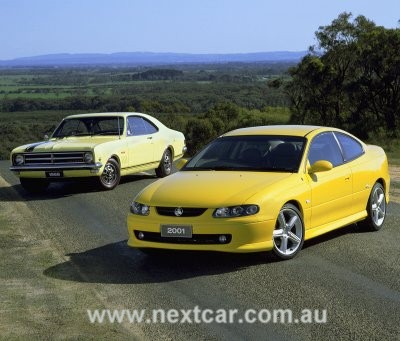
21st Century 2001 Holden builds its six millionth vehicle at Elizabeth and launches the new millennium Monaro sports coupe launched at the Sydney Motor Show. 2002 Holden announces the first major US export programme with sales of the Monaro coupe (known in the USA as the Pontiac GTO). Mark Skaife and Jim Richards win the 2002 Bathurst 1000 and a 7.0-litre Monaro wins the inaugural Bathurst 24-hour race. 2003
A $200 million redevelopment of Holden’s Fishermans Bend precinct is announced and the Holden Innovation R&D centre is opened. New vehicles introduced include a new generation Rodeo light commercial vehicle range and a turbocharged Astra SRi and Convertible. 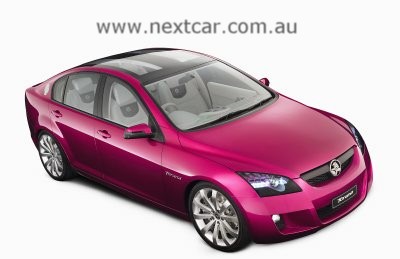
2004 Holden and Saab join forces with the announcement of their integration into a single business entity. The all new AH series Astra hatch is released and the Torana TT36 show car shines at the Sydney Motor Show. Holden produces the last ECOTEC V6 engine at Fishermans Bend. 2005 A special edition CV8Z Monaro marks the final chapter of Monaro production as the company celebrates 40 years of the General Assembly Plant at Elizabeth. Holden introduces the VZ One Tonner, Crewman Cross 6 and Adventra V6. The 1953 FJ inspired Holden Efijy concept car is unveiled to the delight of large audiences. 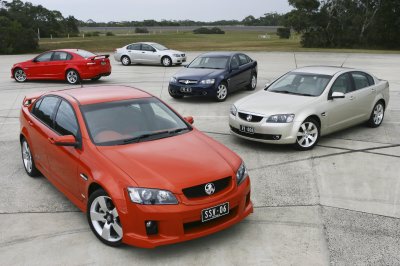
2006 The growing significance of Holden’s role within the GM family is reinforced when Holden announces an expanded GM global design role. The VE series Commodore sedans are released (VZ wagons and utes continue production until late 2006). GM Holden sets an all-time vehicle export record. 2007 The newly launched VE Commodore is the subject of a new export deal – the Commodore SS is to be sold in the US as the Pontiac G8. VE Commodore and WM Caprice win Australian Design Awards. The Commodore is Australia’s top-selling car for the 12th straight year. 2008 In the year of Holden’s 60th anniversary, the company’s export success continued to grow with announcements of the Holden built Pontiac GXP sedan heading to North America. The Holden 60th Anniversary Coupe 60 was revealed in March. | ||||
ABN 47106248033 |
 |
All rights reserved. |

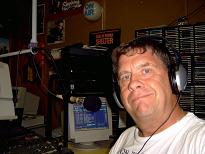
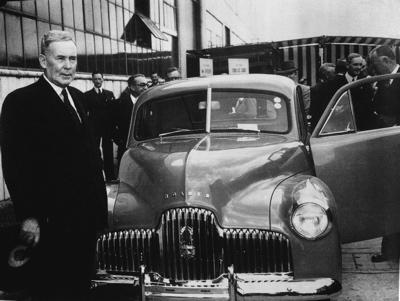 GM Holden will mark the 60th anniversary of Australia’s first locally developed car, the Holden 48-215 on
Saturday 29th November.
GM Holden will mark the 60th anniversary of Australia’s first locally developed car, the Holden 48-215 on
Saturday 29th November.